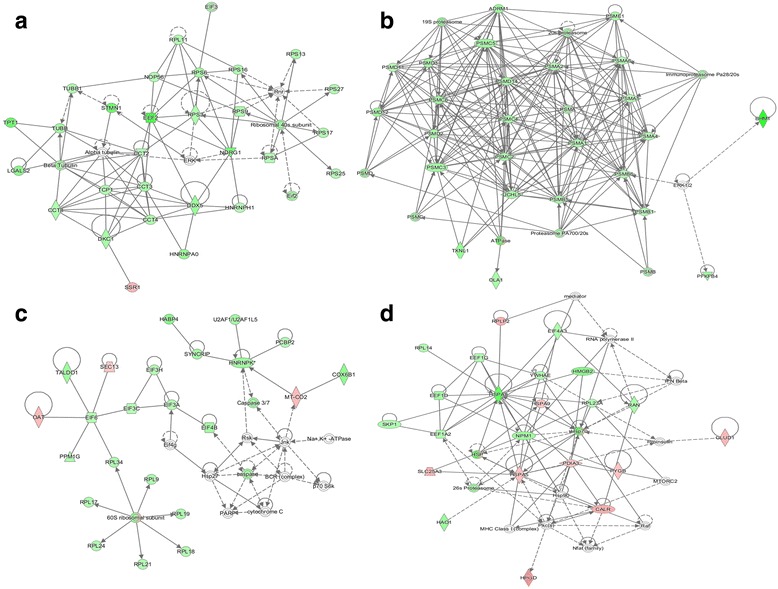Fig. 3.

Top four-scoring biological networks for the significantly elevated temperature (21 °C) regulated proteins in liver of Atlantic salmon using IPA analysis. a RNA Post-Transcriptional Modification, Cellular Assembly and Organization, (b) Cell-To-Cell Signaling and Interaction”, “Cancer, Cell Death and Survival, Organismal Injury and Abnormalities, (c) Protein Synthesis, Gene Expression, Developmental Disorder, and (d) Protein Trafficking, Molecular Transport, Cellular Compromise. Nodes are colored according to increased (red) or decreased (green) abundance at elevated temperature. A line indicates that two proteins have shown binding, a line terminating in an arrow means that one protein acts on the other protein. Networks illustrate the effect of chronically elevated temperature on protein synthesis and degradation via down-regulation of ribosomal subunits (RPS proteins in network A and RPL proteins in network C), translation initiation (EIF proteins in network C) and elongation factors (EEF proteins in networks A and D), chaperoning-containing TCP1 complex (TCP1 and CCT proteins in network A) and proteasome subunits (PSMC and PSMD proteins in network B). See Additional file 3 for full name of node abbreviations
